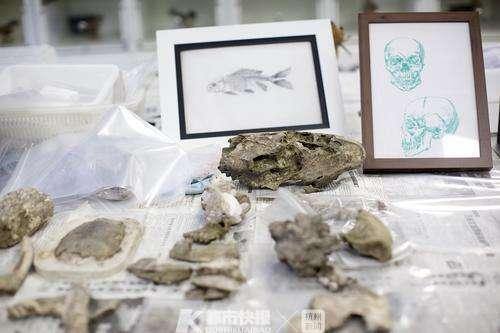Song Shu, a girl born after the 1990s, is a zooarchaeologist at Zhejiang Institute of Cultural Relics Archaeology, focusing on animal bones.
Her work has unveiled the unknown side of Liangzhu Ancient City for us.
The archaeologists at Zhejiang Institute of Cultural Relics Archaeology have found over 40 kinds of animal bones on Liangzhu Ancient Historical Site, among which pig bones account for 80%. Other animals include sika deer, sambar deer, elks, roe deer, and muntjacs.
At the Archaeology and Protection Center Lab of Liangzhu Historical Site, we saw Song Shu studying a host of animal bones excavated from the Ancient Riverbank Site of Zhongjiagang Port in Liangzhu Ancient City. After graduating from Jilin University with a master's degree in zooarchaeology in 2016, Song came to Liangzhu, becoming the only one zooarchaeologist in Zhejiang.
What is zooarchaeology?
Zooarchaeology analyzes the animal bones from historical sites of different periods of human history and reveals how humanity leverages animal resources to understand the relations between humanity, habitats and other animal groups.
By studying excavated animal relics such as animal bones, teeth, horns, eggshells, hairs, scales, eggs, feces, and bloodstains, a zooarchaeologist can identify human activities and cultures of specific ages.

Raise pigs? People of Liangzhu started to do so 5000 years ago
"People of Liangzhu Ancient City has started to raise pigs 5000 years ago while many historical sites in Shanghai and Jiangsu have shown that people in those regions still consumed wild deer caught by hunting. What does that mean? It means that 5000 years ago, Liangzhu Civilization might be at a higher level to neighboring regions in terms of politics, economics, and even culture." Song said.
She then added, "You can identify what the society was like including ceremonies, funerals, rituals, divination, pets, social classes, transactions and trade based on the traces of animal bones."
Determination: stick to the path of zooarchaeology
Archaeology is a rarely chosen major, let alone zooarchaeology.
"Liangzhu Historical Site is proof of the 5000-year-old Chinese Civilization and a valuable asset. Many heritages need to be inherited, including intangible ones. By remaining true to the original aspiration and do a good job, one can also inherit the intangible wealth", said Song Shu.